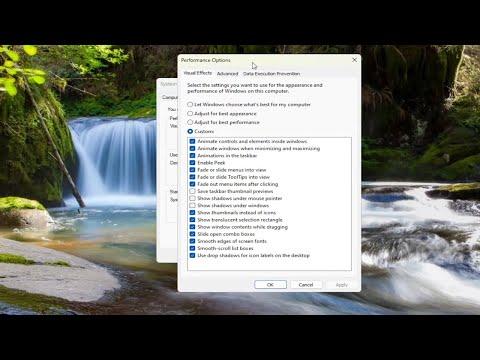It was an ordinary Wednesday afternoon when I first encountered the issue of controlling shadows under windows in Windows 11. I was deep into my work, and as I was adjusting some window settings to streamline my workspace, I suddenly noticed something peculiar. The shadows under my windows, which I had always taken for granted, seemed more pronounced than usual. They were casting a distracting blur on my desktop, and it made me realize how much these visual elements can affect my focus.
At first, I dismissed it as a minor annoyance, thinking it would just go away with a simple restart. However, after rebooting my computer and finding the issue still present, I decided it was time to dive into the settings and see if there was a way to manage these shadows. My goal was to either reduce their intensity or completely hide them, depending on what would offer me a clearer and more unobstructed workspace.
I began by exploring the settings within Windows 11, hoping to find a straightforward solution. I went to the ‘Settings’ app by clicking on the Start button and then selecting the gear icon, which led me to a menu full of system configurations. My first stop was the ‘Personalization’ section, under which I anticipated finding options related to window appearance and visual effects.
Under ‘Personalization,’ I navigated to ‘Colors,’ where I hoped there might be an option to tweak the shadows. However, after examining the options available, I realized that ‘Colors’ only managed themes and accent colors, not the shadows. Frustrated but undeterred, I decided to dig deeper.
The next logical step was to explore the ‘Performance Options,’ as shadows and other visual effects typically fall under performance settings. To access this, I typed ‘Performance’ into the search bar next to the Start button and selected ‘Adjust the appearance and performance of Windows’ from the results. This opened the ‘Performance Options’ dialog box.
In the ‘Performance Options’ window, I found a list of visual effects with checkboxes next to them. These included options such as ‘Animate windows when minimizing and maximizing’ and ‘Show shadows under windows.’ Eager to solve my issue, I focused on the ‘Show shadows under windows’ option. I unchecked the box next to this option, which immediately removed the shadows from under my windows. The change was instant, and I could see the desktop more clearly without the distracting shadows.
Feeling a sense of accomplishment, I decided to check how I could re-enable the shadows if I ever wanted them back. I simply returned to the ‘Performance Options’ window, checked the box for ‘Show shadows under windows’ again, and the shadows reappeared as before. This toggle provided a quick way to switch between having shadows or not, depending on my preference at the time.
The solution I discovered was effective for both Windows 10 and Windows 11. It seemed that these versions shared similar settings for managing visual effects. In Windows 10, I followed a comparable process. I accessed the ‘Control Panel’ from the Start menu, navigated to ‘System and Security,’ and then selected ‘System.’ From there, I clicked on ‘Advanced system settings,’ which opened the ‘System Properties’ dialog. Under the ‘Advanced’ tab, I clicked on ‘Settings’ in the ‘Performance’ section. This brought me to the same ‘Performance Options’ window where I could adjust the visual effects, including the shadows under windows.
Adjusting these settings helped me regain control over my desktop environment and improve my focus. Sometimes, it’s these little tweaks that make a big difference in productivity. By learning how to show or hide shadows under windows, I could customize my workspace to suit my needs better. It was a small adjustment, but it made my workflow smoother and more efficient.
In conclusion, managing visual effects like shadows under windows in Windows 10 and 11 is a simple yet powerful way to tailor your computing experience. Whether you need to minimize distractions or just prefer a cleaner look, knowing how to adjust these settings can significantly enhance your desktop environment. It’s a reminder that sometimes the solution to a problem is just a few clicks away in the settings, and taking the time to explore these options can lead to a more personalized and productive workspace.
